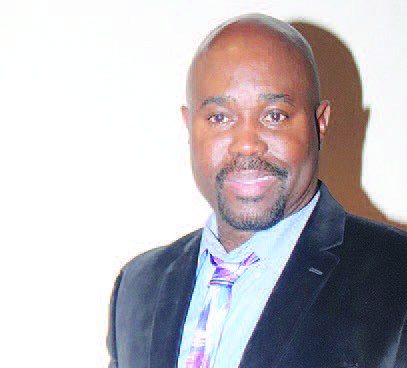PITTSBURGH STUDENTS FLEW IN A HELICOPTER AS THEY LEARNED ABOUT AERONAUTICS AND AVIATION, JULY 27.
On Wednesday, July 27, fifteen youths from the Pittsburgh area were taken to new heights.
Literally.
The students, who are part of the Schenley Heights Community Development Program, were taken on a helicopter excursion in Finleyville (Washington County), as the youths are also part of M-PowerHouse’s aeronautical program. The helicopter was provided by Pittsburgh Heli.
“We believe in mirror emulating,” said M-PowerHouse’s founder, president and CEO, Terry Smith. “To see someone who looks like you in a non-traditional field not only builds self-esteem, but inspires, and aspires one to examine varied aeronautical careers they may have never been exposed to.”

TERRY SMITH, M-POWERHOUSE PRESIDENT/CEO
M-PowerHouse introduces youth to drone technology, and the field of aeronautics—from drones, planes and helicopters, to spaceships. This summer, 40 students took part in the drone program; all will be getting certificates and their own drone during a graduation-style ceremony on Thursday, Aug. 4.
“The youths’ use of flight simulators, and hands-on experience challenges one’s critical-thinking process,” Smith said. “M-PowerHouse Chair, Paula K. Davis, stresses the importance of transferable skills to meet the future workforce needs of the 21st century.”
When it comes to African Americans in the aeronautics arena, Bessie Coleman first comes to mind. She was the first African American woman to earn a pilot’s license, in 1921. She went to flight school in France, then returned to the U.S., stunt flying to earn income. Emory C. Malick, by the way, was the first African American man to earn a pilot’s license in the U.S., in 1912.
Then there was Eugene Bullard, one of the few Black combat pilots during World War I and is largely recognized as the first African American military pilot.
Cornelius Coffey was the first African American certified aircraft mechanic in the U.S. A profile from the National Aviaton Academy said that in 1938, Coffey established the first African American-owned and certified flight school, called “The Coffey School of Aeronautics.” It was located at Harlem Airport in Oaklawn, Ill. From 1938 to 1945, more than 1,500 Black students went through the school; some of those students eventually formed the original Tuskegee Airmen.
Marlon Green was the first Black commercial airline pilot in 1963, and Jill Brown-Hiltz was the first Black woman pilot to fly for a major U.S. commercial airline, 15 years later.
While Green was the first Black commercial airline pilot in an employed capacity, he wasn’t the first Black person to earn their commercial pilot’s license. That distinction belongs to the “Father of Black Aviation,” Charles Alfred Anderson.
According to a bio in the National Museum of the U.S. Air Force, the Tuskegee Institute hired Anderson in 1940 as its chief flight instructor to develop its pilot training program. The U.S. Army Air Corps awarded Tuskegee the contract to provide primary flight training in February 1941. He was the chief instructor for the famed Tuskegee Airmen, and also served as a mentor.
In March 1941, Eleanor Roosevelt, the U.S. First Lady at the time, visited the Tuskegee Institute, in Alabama. Anderson flew her around the school.
“This short flight, considered by most people at the time to be very daring,” read the bio in the National Museum of the U.S. Air Force, “brought media attention to the program, demonstrated that Blacks could fly planes, and showed that the Tuskegee program had the First Lady’s complete trust and support.”
Smith said during the eight-week drone program, students learned about weather, climate change, basic math angles, how to land planes and other Black notables in aeronautics and aviation, like Mae Jemison, the first Black woman to travel into space in 1992.
It’s more than possible that some of the students in the M-PowerHouse program will follow in some of the aforementioned Black aviation pioneers’ footsteps. Smith, along with other African Americans who lead organizations geared to assisting young people, believe to no end that exposing students to new careers, avenues and possibilities translate into success.
M-PowerHouse of Greater Pittsburgh has partnered with Alicia George, Executive Director of the Schenley Heights Community Development Program for the past two years. Schenley Heights Community Development Program’s mission is to nurture, support and develop the community through wholesome programs that address the academic, moral, cultural, health, and recreational needs of the children, youth and their families in the Hill District and around Pittsburgh.
As for that helicopter ride that all 15 students who went to Finleyville experienced? “They were screaming, excited, an adrenaline rush,” Smith told the Courier about the students’ reactions. “Some of the kids were actually saying they want to do it again, they can’t wait until next year. The goal is to get them excited, not just about aeronautics but just education at-large. Think outside the box and realize there is no box…never has been. The sky is the limit.”